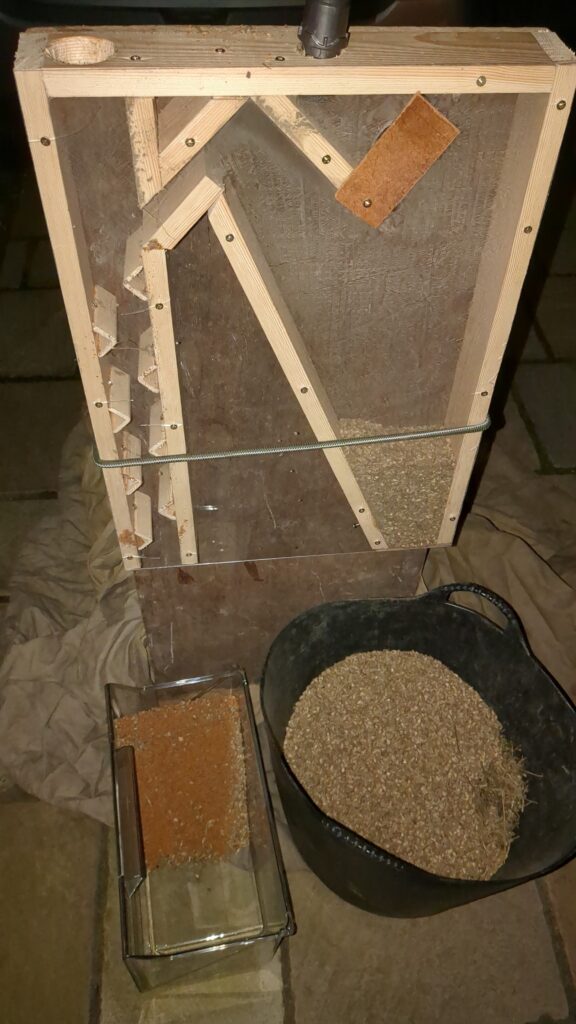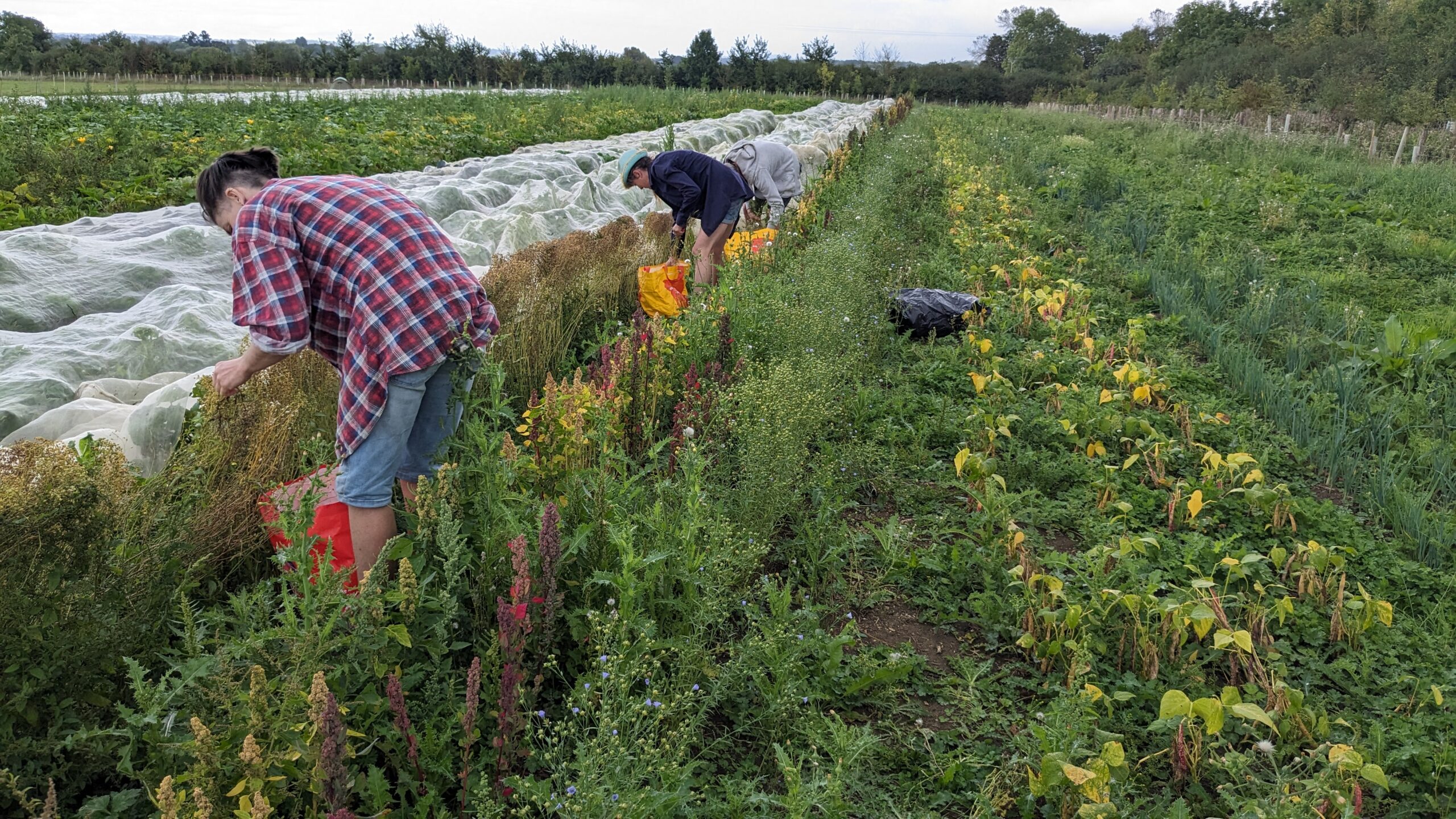We harvested the crops by hand, for speed the whole bean plants were pulled. Seed heads were cut from all the other crops to avoid contaminating the smaller seed with soil, which would be difficult to separate out.
There were so few lentil pods and the weak plants were totally swamped by the weeds which combined to make it not worth the effort to crop them. Both types of linseed had disappointing yields. The quinoa, camelina and borlotto beans all produced a more satisfactory harvest.
Once the crops were cut we started drying them. Luckily we had a few dry days so the camelina, beans and white quinoa were all laid out on large plastic sheets to dry. The black quinoa was cropped later and hung to dry in the barn at Plotgate.

These crops are often grown at field scale and collected with a combine harvester which cuts the seed heads and then threshes the plants to shake the seed/beans loose and a big fan winnows the straw and chaff away, then the seed is sieved. We had to use alternative methods to perform all these tasks.
Camelina was ‘grated’ through the holes in the base of an old bread tray to knock the seed out the seed pod.
A friend had built a bicycle powered thresher that worked well for beans so we visited them and were happy with the results.
Quinoa seed heads hang on tight to the seed, neither grating or the bicycle thresher worked. We found an electric garden shredder did a reasonable job of knocking the seed out the seed head.
Both the camelina and quinoa needed the seed seperating from the chaff. We made a basic sieve from some metal mesh with suitable sized holes and then built a winnower from open source plans found on the internet which used a vacuum cleaner to pull the chaff away as the seeds fell down through it.

Theres plans to press the camelina seed for oil. We are friendly with a hemp growing co-operative who have a small industrial oilseed press.
